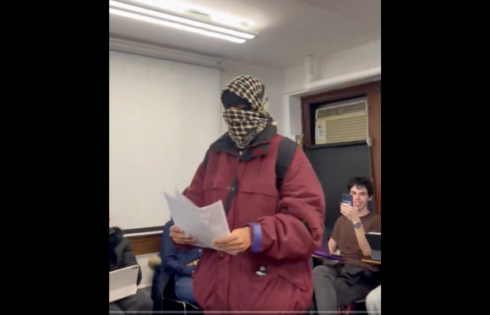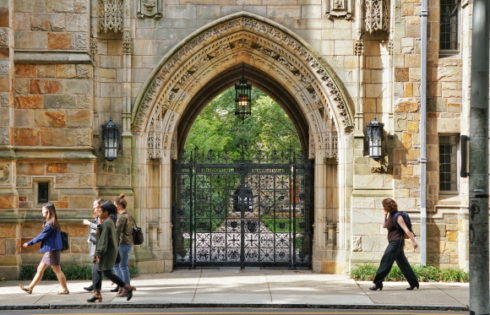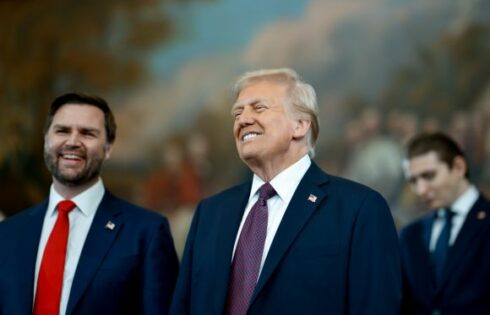
School cuts 185 positions in response to funding crisis
The University of Missouri recently announced major budget and staffing cuts, the latest move the university has made in response to financial and political crises following racial protests that rocked the public system’s flagship campus in fall 2015.
The school has suffered from a negative public image and reduced funding in the wake of the protests. State funding cuts and continuing depressed enrollment resulted in a $49 million budget shortfall. To cope, the administration laid off 30 employees and permanently eliminated 155 vacant positions.
A Missouri state representative told The College Fix that the university is “more concerned about the money, and image, than the student.” College students who decided not to attend University of Missouri said that the environment created by the protests, as well as high costs and unfavorable funding options, caused them to turn to other schools.
Protests and Unrest
In fall 2015, the alleged use of racial of racial slurs toward the leader of the Missouri students association led to an explosion of racial activism and protests on the campus.
In response to the protests, the university implemented mandatory “diversity and inclusion training for all faculty, staff, and students,” though activists continued their demonstrations anyway. Several students began hunger strikes, and members of the football team refused to play until then-university president Tim Wolfe resigned. Former chancellor R. Bowen Loftin shortly followed Wolfe’s example, announcing his resignation several hours after Wolfe’s.
Wolfe later admitted in a publicized letter that he abruptly resigned “to prevent further embarrassment and a potential Ferguson-like event on the MU Campus,” a reference to the violent protests that had occurred in Ferguson, Missouri the year before.
During the University of Missouri protests, which continued after the president and chancellor’s resignations, professor Melissa Click infamously accosted Tim Tai, a freelance reporter covering the events for ESPN. Click was later charged with third-degree assault.
Over 100 state lawmakers signed a letter demanding Click’s firing. The university dismissed her a little over a month later.
Fallout and funding issues
Following the unrest, Missouri citizens, lawmakers and students began to take a negative view of the university.
In the midst of the protests, Remington Research released the results of a poll which found that 58 percent of respondents viewed the university administration negatively in light of their response to the protests.
In 2016, the Missouri legislature passed a budget bill which contained a $3.8 million cut for the University of Missouri’s administration. This was openly billed as a reprisal for their handling of the 2015 protests, according to The Columbia Missourian. A total of $12 million was cut from the university’s budget that year.
Last year Missouri governor Eric Greitens withheld a further $22 million of funding from the university system in 2017 to maintain a balanced budget as required by the state’s constitution.
Greitens proposed another $43 million in cuts to the University of Missouri’s budget for this year, though legislators ultimately settled on a $2 million cut.
Consequences from the legislature
Speaking in a phone interview, Representative Kip Kendrick told The Fix that for the 2017 fiscal year, the legislature specifically directed cuts at the University of Missouri administration and the Columbia campus where the protests took place. In the same year, the state established and funded a commission to review the University of Missouri system.
Reached via email, Missouri state senator Tom Hurst ascribed decreasing enrollment and state support to the university’s response to the 2015 protests: “Couple of years ago, whenever all the protests were taking place on the campus, many students decided they did not want that atmosphere and attended different universities. From what I’ve seen we did not lose those students to other states, they just went to other universities within the state.”
“Given that it seems like MU does not need the funding, but some of the other universities in the State could use a little extra help because they did the right thing,” Hurst added.
Enrollment down
Student enrollment began to drop after the protests as well.
In fall 2015, the semester that saw the protests, total Mizzou enrollment stood at 35,448. In fall of 2017, that number was down to 30,870. Freshman enrollments have dropped significantly, with the smallest class in over a decade matriculating in 2017, according to The Kansas City Star.
Corbin Chancellor, a student who said he left the university after the protests in 2015, told The College Fix that he “wasn’t comfortable with the environment on campus,”
“Students were afraid to walk on campus because of the threat of shootings on yikyak [a now-defunct anonymous messaging app]. I walked through marches at least once a week and many of those people didn’t even know why they were protesting beyond wanting equal treatment which I remember them saying they wanted a special curve just for black students,” Chancelloer said.
Chase Rowland, another Missouri college student, told The Fix that he chose to attend Washington University at St. Louis over the University of Missouri though not because of Missouri’s image but because Washington University offered better funding.
“I applied to MU, was accepted, I was assigned housing and I toured the campus. I was really all set to go. Then I got my tuition statement. Despite being awarded the Chancellor’s scholarship, the Bright Flight scholarship, and having my family income be in one of the lowest categories, I was still going to to have to take out a $10,000 loan per year.”
“Wash U actually gave me enough financial aid to cover my tuition, housing and food in full. After that it was an easy choice. MU was not willing at all to help me go to school and Wash U made sure I could go,” Rowland said.
Tom Hurst, the state senator, said that his daughter chose Missouri State University because “MU is more concerned about their image and MSU was more concerned about the student.”
Hurst said the problem is not new: He attended the University of Missouri and said the same atmosphere prevailed. “I feel like I had to educate myself versus having the professors educate me. They didn’t care if I showed up or not, they were going to get paid anyway,” he said.
Enrollment increases slightly after pricey P.R. campaign
Earlier this year the university announced that freshman enrollment increased by 14 percent for the fall 2018 semester. Freshman enrollment still remains below that of fall 2015.
The increase in this year’s freshman class will allow the university to reopen several dorms that were closed in 2016 on account of decreased enrollment, The Columbia Tribune reported earlier this year.
Increasing enrollment may be due to a large public relations campaign the university launched this year, which Fox News reports cost the administration $1.3 million.
Part of the PR efforts included visiting local high schools, and several new scholarships tailored specifically to out-of-state students.
In a recent letter to the editors of The Wall Street Journal, president of the University of Missouri Board of Curators David Steelman attributes these cuts to a desire to reduce bloat: “We are making strategic decisions to reallocate money, reducing administration and cutting low-performing programs.”
MORE: Mizzou has lost a third of freshmen in two years – even after enrollment jump this fall
MORE: Missouri chaos continues: Mizzou lays off 30 in wake of $49 million shortfall
IMAGE: Velli Sky / Shutterstock.com
Like The College Fix on Facebook / Follow us on Twitter






Please join the conversation about our stories on Facebook, Twitter, Instagram, Reddit, MeWe, Rumble, Gab, Minds and Gettr.